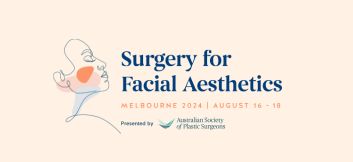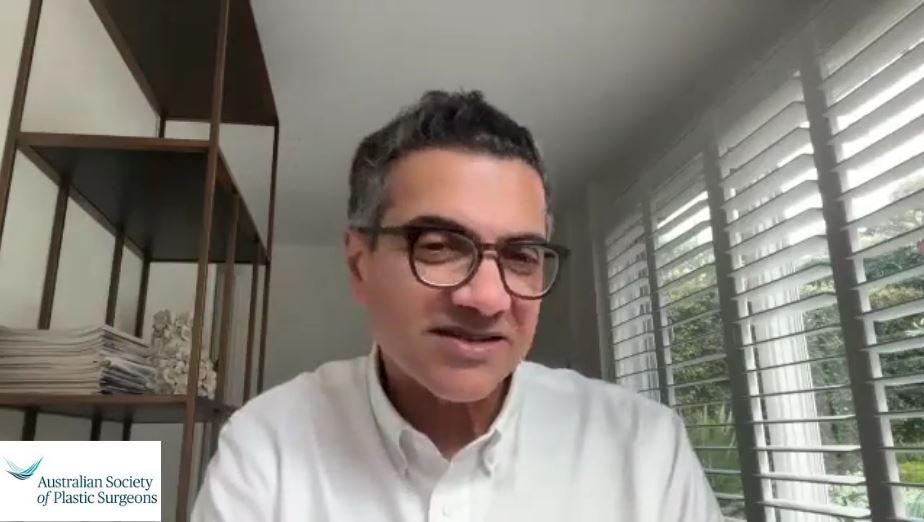Procedures
Hand Surgery
- About Your Specialist Plastic Surgeon
- Cosmetic
- Non-surgical Procedures
- Plastic Surgery Glossary
- Questions for Your Surgeon
- Reconstructive
- Surgical Procedures
- Abdominoplasty (Cosmetic)
- Abdominoplasty (muscle repair postpartum)
- Arm Lift
- Body Contouring
- Body Lift
- Breast Asymmetry Correction
- Breast Augmentation (Implants)
- Breast Implants with Lift
- Breast Lift
- Breast Reconstruction
- Breast Reduction
- Brow Lift
- Burns and Scarring
- Buttocks Lift
- Chin Surgery
- Cleft Lip & Palate
- Ear Surgery
- Eyelid Reduction Surgery
- Facelift Surgery
- Facial Implants
- Fat injection
- Gender Affirming Surgeries
- Gynaecomastia (Male Breast Reduction)
- Hair Replacement Surgery
- Hand Surgery
- Labiaplasty
- Liposuction
- Nipple Enhancement for Inverted Nipples
- Nose Surgery
- Scar Revision
- Skin Cancer
- Thigh Lift
- Tissue Expansion
Hand Surgery
Any surgical or invasive procedure carries risks. Before proceeding, you should seek a second opinion from an appropriately qualified health practitioner.
Hand surgery encapsulates a range of treatments designed to restore the function and appearance of the hand. In recent years, Specialist Plastic Surgeons have been at the forefront of pioneering dramatic advances in treating patients with hand injuries, degenerative disorders, and birth defects of the hand.
The most common procedures in hand surgery are those done to repair injured hands, including injuries to the:
- Tendons, nerves, blood vessels and joints
- Fractured bones
- Burns, cuts and other injuries to the skin
Techniques used by Specialist Plastic Surgeons include:
- Grafting
– the transfer of skin, bone, nerves, or other tissue from a healthy part of the body to repair the injured part - Flap surgery
– moving the skin along with its underlying fat, blood vessels, and muscle from a healthy part of the body to the injured site - Replantation or transplantation
– restoring accidentally amputated fingers or hands using microsurgery, an extremely precise and delicate surgery performed under magnification. Some injuries may require several operations over an extended period of time
In many cases, surgery can restore a significant degree of feeling and function to injured hands.
The carpal tunnel is a passageway through the wrist carrying tendons and one of the hand’s major nerves. Pressure may build up within the tunnel because of disease (such as rheumatoid arthritis), injury, fluid retention during pregnancy, overuse, or repetitive motions. The resulting pressure on the nerve within the tunnel causes a tingling sensation in the hand, often accompanied by numbness, aching, and impaired hand function. This is known as carpal tunnel syndrome.
In some cases, splinting of the hand and anti-inflammatory medications will relieve the problem. If this doesn’t work, however, surgery may be required.
Surgery of the carpal tunnel aims to release pressure by removing tissue that is pressing on the nerve. The results of the surgery will depend in part on how long the condition has existed and how much damage has been done to the nerve. For that reason it is a good idea to see a Specialist Plastic Surgeon early if you think you may have carpal tunnel syndrome.
Rheumatoid arthritis, an inflammation of the joints, is a disabling disease that can affect the appearance and the function of the hands and other parts of the body. It often deforms finger joints and forces the fingers into a bent position that hampers movement.
Disabilities caused by rheumatoid arthritis can often be managed without surgery, for example, by wearing special splints or using physical therapy to strengthen weakened areas. For some patients, however, surgery offers the best solution. Whether or not to have surgery is a decision you should make in consultation with your Specialist Plastic Surgeon and your rheumatologist.
Surgeons can repair or reconstruct almost any area of the hand or wrist by removing tissue from inflamed joints, repositioning tendons, or implanting artificial joints. While your hand may not regain its full use, you can generally expect a significant improvement in function and appearance.
It is important to remember that surgical repair doesn’t eliminate the underlying disease. Rheumatoid arthritis can continue to cause damage to your hand, sometimes requiring further surgery. You will still need to see your rheumatologist for continuing care.
Dupuytren’s contracture is a disorder of the skin and underlying tissue on the palm side of the hand. Thick, scar-like tissue forms under the skin of the palm and may extend into the fingers, pulling them toward the palm and restricting motion. The condition usually develops in mid-life and has no known cause, though it has a tendency to run in families.
Surgery is the only treatment for Dupuytren’s contracture. A Specialist Plastic Surgeon will cut and separate the bands of thickened tissue, freeing the tendons and allowing better finger movement. The operation must be done very precisely, since the nerves that supply the hand and fingers are often tightly bound up in the abnormal tissue. In some cases, skin grafts are also needed to replace tightened and puckered skin.
The results of the surgery will depend on the severity of the condition. You can usually expect significant improvement in function, particularly after physical therapy.
Congenital deformities of the hand can interfere with proper hand growth and cause significant problems in the use of the hand. Fortunately, with modern surgical techniques most defects can be corrected at a very early age.
One of the most common congenital defects is syndactyly, in which two or more fingers are fused together. Surgical correction involves cutting the tissue that connects the fingers, then grafting skin from another part of the body. The procedure is more complicated if bones are also fused.
Surgery can usually provide a full range of motion and a fairly normal appearance, although the colour of the grafted skin may be slightly different from the rest of the hand.
Other common congenital defects include short, missing, or deformed fingers, immobile tendons, and abnormal nerves or blood vessels. In most cases, these defects can be treated surgically and significant improvement can be expected.
Since the hand is a very sensitive part of the body, you may have mild to severe pain following surgery. Your Specialist Plastic Surgeon will prescribe injections or oral pain medication where required.
Depending upon your procedure, dressings and a splint may be used after surgery to restrict motion and promote healing. How long your hand must remain immobilised and how quickly you resume your normal activities depends on the type and extent of surgery and on how fast you heal.
To enhance your recovery and give you the fullest possible use of your hand, your surgeon may recommend a course of physical and occupational rehabilitation under the direction of a trained hand therapist. Your therapy may include hand exercises, heat and massage therapy, electrical nerve stimulation, splinting, traction, and special wrappings to control swelling. It is crucial that you follow the therapist’s instructions and complete the entire course of therapy if you want to regain the maximum use of your hand.
Scars are an inevitable part of any invasive surgery and in the case of hand surgery, scars may be prominent and long lasting. Your Specialist Plastic Surgeon will endeavour to minimise scarring and to keep your scars as inconspicuous as possible.
Depending upon the extent of the problem, further surgery may be required to restore your hand’s function and appearance.
Cost is always a consideration for surgery. Prices for individual procedures can vary widely between Specialist Plastic Surgeons. Some factors that may influence the cost include the surgeon’s experience, the type of procedure used and the geographic location of the office.
Costs associated with the procedure may include:
- Surgeon’s fee
- Hospital or surgical facility costs
- Anaesthesia fees
- Prescriptions for medication
- Post-surgery garments
- Medical tests
Your surgeon should welcome any questions you may have regarding fees.
Donor site:
An area of your body where the surgeon harvests skin, muscle and fat
Excision:
To remove the skin
Flap surgery:
A technique that moves skin along with its underlying fat, blood vessels, and muscle from a healthy part of the body to the injured site
General anaesthesia:
Drugs and/or gases used during an operation to relieve pain and alter consciousness
Grafting:
The transfer of skin, bone, nerves, or other tissue from a healthy part of the body to repair the injured part
Intravenous sedation:
Sedatives administered by injection into a vein to help you relax
Local anaesthesia:
A drug injected directly to the site of an incision during an operation to relieve pain
Replantation or transplantation:
restoring accidentally amputated fingers or hands using microsurgery, an extremely precise and delicate surgery performed under magnification. Some injuries may require several operations over an extended period of time
Sutures:
Stitches used by surgeons to hold skin and tissue together
Visit the Plastic Surgery Glossary
for more medical terms.
This website is intended to provide you with general information only. This information is not a substitute for advice from your Specialist Plastic Surgeon and does not contain all the known facts about this procedure or every possible side effect of surgery. It is important that you speak to your surgeon before deciding to undergo surgery. If you are not sure about the benefits, risks and limitations of treatment, or anything else relating to your procedure, ask your surgeon to explain. Patient information provided as part of this website is evidence-based, and sourced from a range of reputable information providers including the American Society of Plastic Surgeons, Better Health Channel and Mi-tec medical publishing.
Featured Stories

Member Blog with Dr Ellis Choy: What is a Deep Plane Facelift?
Who is the ideal candidate for a deep plane facelift?…
Continue reading
